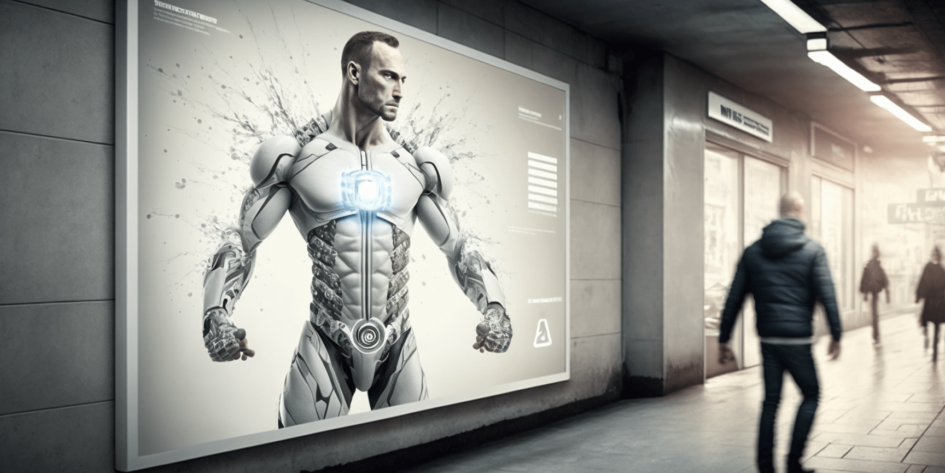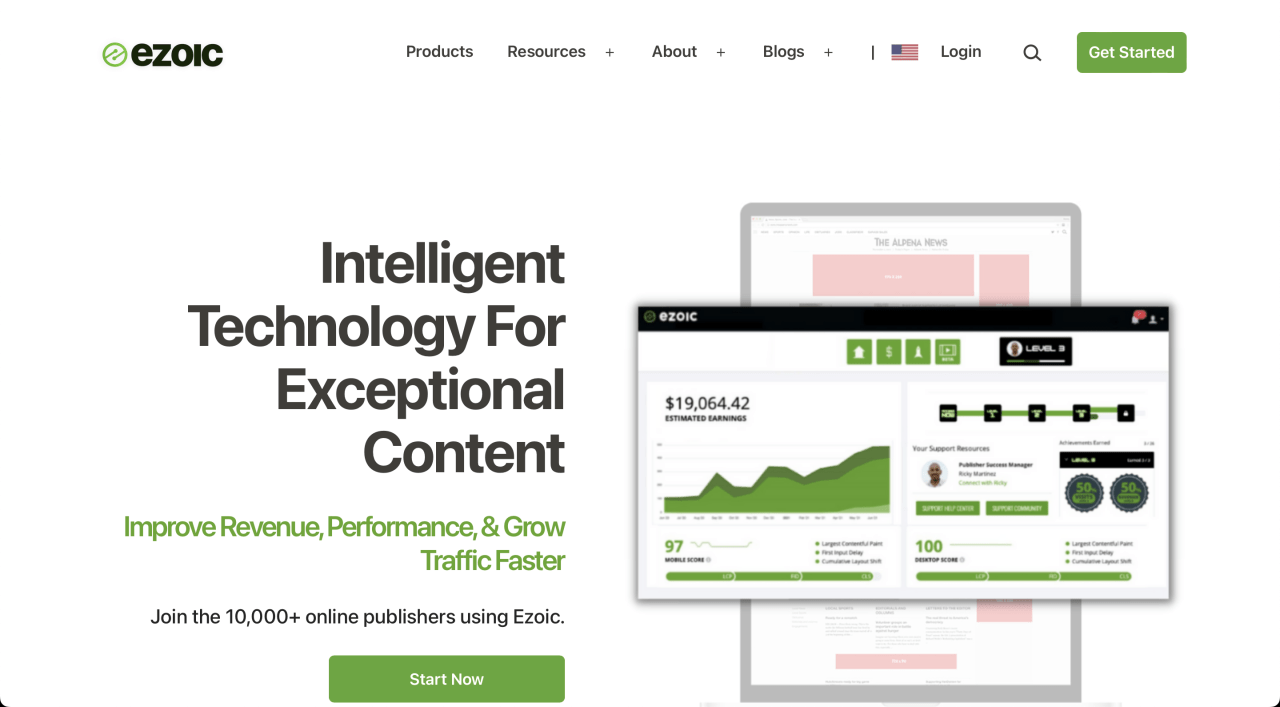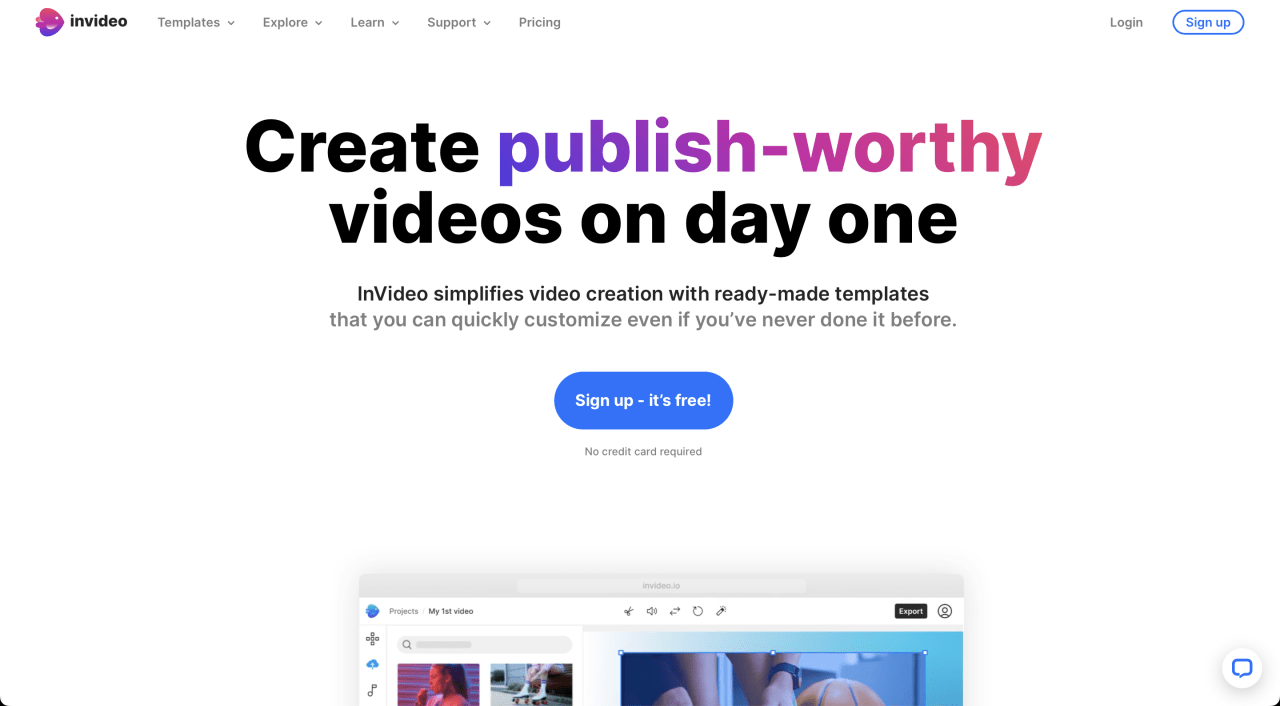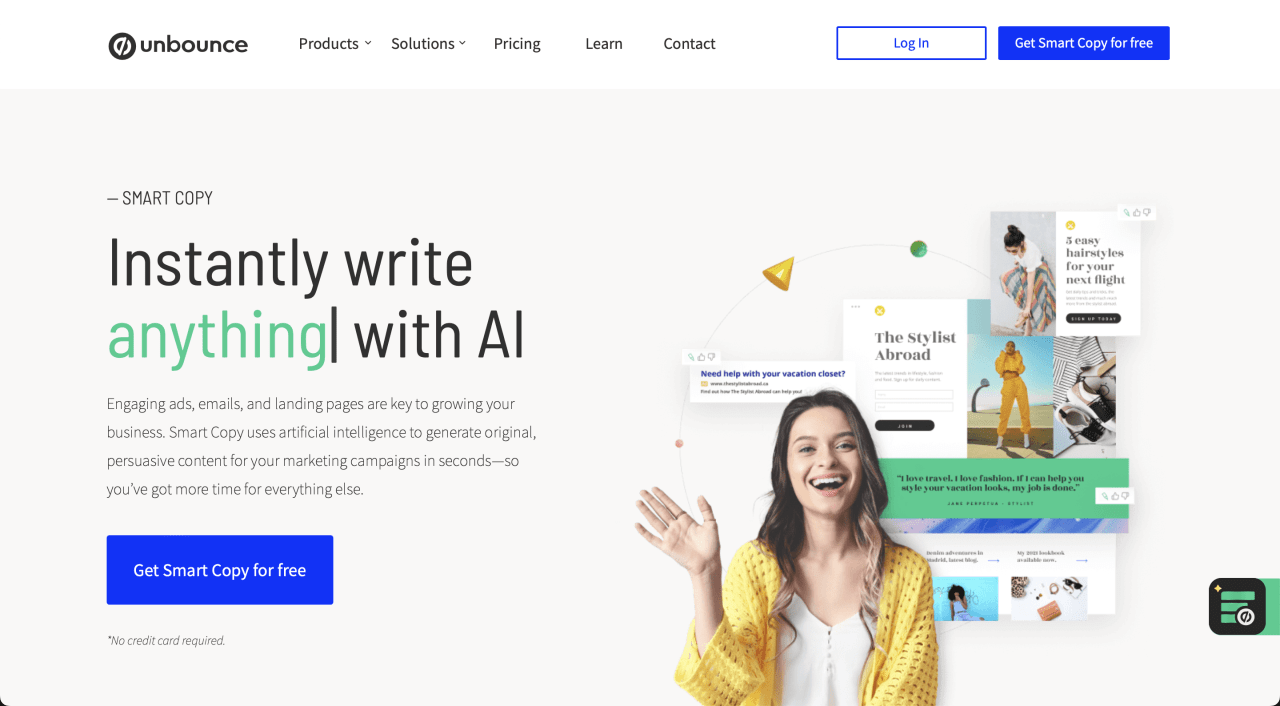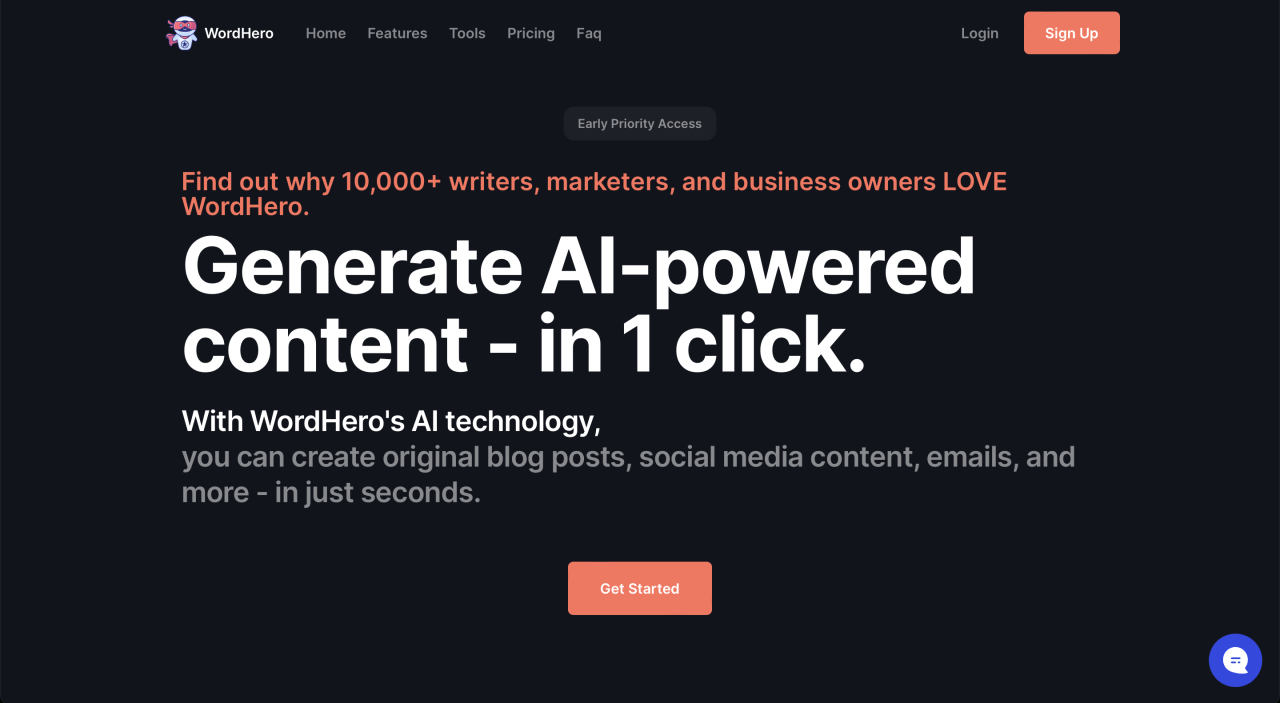AI Ad generators are a promising tool for businesses looking to streamline their advertising efforts. By utilizing machine learning algorithms, these programs can create ads that are tailored to specific audiences and optimized for maximum effectiveness. There are various types of AI ad generators available, each with its own set of benefits and considerations. When choosing an AI ad generator, it is important to consider factors such as budget, audience targeting capabilities, and ease of use. By following best practices such as testing multiple versions of an ad and monitoring performance metrics closely, businesses can maximize the benefits of using AI ad generators. With the help of this technology, companies can save time and resources while still creating compelling advertisements that resonate with customers.
Find the range of tools here
Ezoic is a Google award-winning platform for publishers that provides unique product and service . . .
Pricing: Free to Try, Paid
Categories: Ad Generator, Marketing, Social Media, Video Editing
Invideo.io is a video content creation platform that enables users to plan and execute a video . . .
Pricing: Freemium, Paid
Categories: Ad Generator, Marketing, Social Media, Video Editing, Video Generation
Ocoya is a content marketing platform that offers a range of features for social media management, . . .
Pricing: Free to Try, Paid
Categories: Ad Generator, Copywriting, Image Improvement, Image Cleaner, Image Generator, Marketing, SEO, Social Media, Video Editing, Video Generation
Plai is an online platform that makes digital marketing easier and more effective. It helps . . .
Pricing: Free to Try, Paid
Categories: Ad Generator, Marketing, Website Generator
Unbounce Smart Copy is a tool that uses artificial intelligence to generate high-quality content . . .
Pricing: Freemium, Paid
Categories: Ad Generator, Email Generator, Marketing, Website Generator
WordHero.co is an AI-powered content writing tool that helps businesses and creators simplify their . . .
Pricing: Paid
Categories: Ad Generator, Copywriting, Marketing, Social Media
As technology advances, businesses are constantly searching for innovative ways to reach their target audience. One such innovation is the use of AI ad generators, which have revolutionized the advertising industry by providing personalized and dynamic content that resonates with consumers. These systems utilize machine learning algorithms to analyze vast amounts of data, enabling them to create highly targeted advertisements that appeal to specific demographics. This article explores the benefits of AI-generated ads and how they are becoming an essential tool for modern-day marketers looking to stay ahead in a rapidly evolving digital landscape.
Understanding AI Ad Generators
The advent of artificial intelligence (AI) has revolutionized various industries, including advertising. One of the emerging technologies in this field is the AI ad generator. This computer program utilizes machine learning algorithms to create compelling and personalized advertisements for different businesses. Understanding how these generators work can provide insights into their potential benefits and limitations.
The AI ad generator uses natural language processing (NLP) techniques to analyze data related to a business’s products or services, target audience, and marketing goals. It then generates ads that are optimized for social media platforms like Facebook, Instagram, and Twitter. These ads may include text, images, videos, or a combination of all three elements. The generated content aims to capture the reader’s attention and trigger an emotional response that will drive them toward taking action.
Although AI ad generators have many advantages over traditional advertising methods, they also have some limitations. For instance, they need high-quality input data to generate relevant output content. Additionally, while they can produce dozens of ad variations within minutes, human creativity cannot be entirely replaced by machines.
In conclusion about understanding AI ad generators, it is evident that their ability to automate repetitive tasks saves time and effort required in creating attractive ads; thus enabling companies to focus on more productive activities such as customer engagement and product development. In subsequent sections about the benefits of using an ad generator, we shall explore how this technology improves marketing campaigns’ performance by increasing click-through rates(CTR), conversion rates(CR), brand awareness(BA), and return on investment(ROI).
Benefits Of Using AI Ad Generators
The benefits of using AI ad generators are numerous and significant. Firstly, they save time for advertisers as the process of generating ads is automated. Secondly, AI ad generators can produce a large volume of high-quality ads in minutes with different variations to target specific audiences. Thirdly, they reduce costs by eliminating the need for hiring an expensive team of graphic designers or copywriters. Lastly, AI ad generators allow for data-driven advertising where insights into customer behavior can be analyzed to create personalized and effective campaigns.
As businesses strive to stay ahead of their competition, they must explore innovative ways to promote their products or services effectively. Incorporating AI ad generators into marketing strategies is one such way to achieve this goal. With its ability to generate accurate results quickly and efficiently while being cost-effective, there’s no denying that relying solely on human creativity may not always cut it in today’s fast-paced digital world.
In light of the advantages mentioned above, it’s clear why so many companies have already embraced this technology as part of their marketing strategy. However, it’s important to note that various types of AI ad generators exist, each with unique features catered to particular needs. So let us now dive into the different types of AI ad generators available in the market and understand how they operate step-by-step!
Different Types Of AI Ad Generators
When it comes to advertising, using artificial intelligence (AI) is becoming increasingly popular. AI ad generators are one of the most sought-after tools in this field as they can create ads that are not only visually appealing but also effective at converting viewers into customers. There are several different types of AI ad generators available on the market that cater to various needs and preferences. One type is the image-based generator which focuses solely on creating eye-catching visuals for an advertisement. Another type is text-based, where the generator creates headlines and taglines based on specific keywords or phrases provided by the user. Lastly, there are video-based generators that use AI algorithms to edit videos and add interesting effects to make them stand out.
While all these types have their unique features, it’s important to consider your goals before choosing a particular kind of AI ad generator. For instance, if you want to promote a product with visual appeal such as fashion items or home decor, then image-based generators might be more suitable than text-based ones. On the other hand, if you’re promoting a service like healthcare or insurance, then text-based generators may work better because they can generate attention-grabbing taglines that highlight key benefits.
In light of this discussion about the different types of AI ad generators, let us now delve deeper into some factors that need consideration when selecting an appropriate tool for your business needs.
Factors To Consider When Choosing An AI Ad Generator
Choosing the right AI ad generator is crucial to creating effective advertisements that resonate with your target audience. Like a ship captain navigating through rough waters, you need to be mindful of the various factors that can make or break your advertising campaign. Here are five essential considerations when selecting an AI ad generator:
- The scope of customization options available on the platform
- The level of automation and sophistication in generating ads
- Compatibility with different advertising channels
- Transparency around data privacy policies
- User-friendliness and ease of use
Each factor plays a vital role in determining which AI ad generator will work best for your business needs. For instance, if you want more control over how your ads look while benefiting from automated processes, then finding a tool with robust customization features could be ideal. Alternatively, suppose you’re short on time and require quick results without compromising quality. In that case, opting for higher levels of automation may suit you better.
As innovation continues to drive businesses forward, we must remain open-minded about new technologies like AI ad generators. However, it’s also critical to approach them mindfully by assessing their potential benefits against any risks or limitations they present. By doing so, we can ensure ethical practices are upheld while utilizing these tools effectively.
Moving onto the next section, let’s explore some best practices for using AI ad generators that can help maximize their impact on our marketing campaigns.
Best Practices For Using AI Ad Generators
Artificial intelligence (AI) ad generators have become increasingly popular in the advertising industry due to their ability to create engaging, personalized and cost-effective advertisements. However, using an AI ad generator is not a guarantee for success. To maximize its potential, it is important to follow best practices that can help you create impactful ads. In this article, we will discuss some of these best practices while eliminating personal pronouns.
To begin with, one figure of speech that can grab the attention of our innovative audience is ‘the sky’s the limit’. The use of this metaphor emphasizes how limitless the possibilities are when utilizing AI for generating ads. It also implies that there are no boundaries or restrictions when creating content through AI technology.
Moving on to our discussion about best practices, one key factor is defining your target audience accurately. This involves identifying demographics such as age range, gender, interests, and location. By doing so, you can tailor your advertisement specifically towards them which results in higher engagement rates.
Another practice worth mentioning is ensuring the message being conveyed is clear and concise. Overloading your ad with too much information may confuse leading to decreased interest from audiences. Therefore crafting your message carefully ensures high retention rates amongst consumers.
Lastly, always experiment with different styles and formats before deciding upon one final design. Different types of media can influence customer behavior differently; hence testing out variations allows you to select what works best for your brand.
In conclusion, incorporating these strategies into your campaign helps optimize the utilization of an ai ad generator resulting in successful campaigns that reap rewards beyond expectations.
Frequently Asked Questions
Can AI Ad Generators Completely Replace Human Copywriters?
The rise of AI ad generators has led to debates about their ability to replace human copywriters. While some argue that this technology can entirely take over the role of a copywriter, others believe that it cannot completely replicate human creativity and perspective in advertising.
Firstly, one reason why AI ad generators may not be able to fully replace humans is due to their limited understanding of emotions and empathy. Copywriting involves crafting persuasive language that resonates with the target audience on an emotional level. Although AI ad generators have been programmed with data-driven insights, they lack the capacity for nuanced interpretation required to understand how certain words or phrases would make someone feel.
Secondly, the effectiveness of AI-generated ads depends heavily on the quality of input data given by humans. This means that while machines can create various versions of ad copies based on specific parameters such as demographics and interests, it still requires proper guidance from human experts who understand brand messaging and consumer behavior.
Thirdly, there are concerns about legal issues related to intellectual property rights when using automated solutions in creative industries like advertising. As algorithms can generate content at scale, plagiarism checks become more challenging than ever before. Furthermore, ethical considerations arise regarding whether machine learning systems should be allowed to generate content without any form of regulation or oversight.
Lastly, despite these limitations discussed above, there is no denying that AI ad generators offer several benefits such as speed and cost-effectiveness compared to traditional methods. With advancements in natural language processing (NLP) and other technologies powering them up further every day, we might see a future where AI-generated ads surpass those created by humans.
In conclusion, while AI-powered tools have come a long way in generating high-quality advertisements quickly and efficiently, the complete replacement of human copywriters seems unlikely at present. However, continued research into developing smarter algorithms combined with expert supervision could yield promising results leading us closer to full automation someday – perhaps even sooner than imagined!
What Are The Ethical Concerns Surrounding The Use Of AI Ad Generators?
The use of AI ad generators has raised various ethical concerns among advertisers, copywriters, and consumers. One significant concern is the potential replacement of human copywriters by machines. While some argue that AI can produce high-quality content at a faster rate than humans, others believe that it cannot replace the creativity and emotional intelligence that are essential in advertising. Another issue is the possibility of bias in AI-generated ads due to the underlying algorithms’ inherent biases or data used to train them. Additionally, there are privacy concerns regarding personal information collected and analyzed by AI systems for targeted advertising purposes.
Despite these ethical concerns, the use of AI ad generators continues to grow as companies seek more efficient ways to reach their target audience. It is worth noting that while AI technology improves rapidly, its limitations remain evident in certain areas like generating creative ideas or understanding cultural nuances accurately. Therefore, marketers must ensure that they maintain transparency about how they employ this technology and clarify any misconceptions surrounding it.
In conclusion, while the use of AI ad generators presents several ethical challenges, it also offers tremendous opportunities for innovation and efficiency in advertising practices. Advertisers must continue exploring new ways to leverage this technology’s capabilities while addressing associated issues such as bias and privacy concerns carefully. Ultimately, achieving a balance between technological advancements and ethics will play a critical role in shaping the future of advertising industry practice.
How Do AI Ad Generators Ensure Legal Compliance With Advertising Regulations?
With the advent of AI ad generators, there are concerns about their compliance with advertising regulations. However, it is important to note that these tools have been designed to comply with legal standards and guidelines. One way in which they ensure legal compliance is by providing templates for ads that already adhere to regulatory requirements. For instance, some AI ad generator platforms offer pre-approved messaging options and images that meet specific industry standards. This reduces the risk of non-compliance and ensures a level of consistency across all generated ads.
Another strategy employed by AI ad generators is the use of natural language processing (NLP) technology. This allows them to interpret complex legal jargon and translate it into more understandable terms, making it easier for businesses to create compliant advertisements. Additionally, NLP can identify potential risks or issues within an advertisement before it is published, allowing companies to modify any problematic content beforehand.
Furthermore, some AI ad generators employ machine learning algorithms that analyze existing advertising data to learn from previous successful campaigns while ensuring adherence to regulations. These algorithms can predict how certain audiences will respond to different types of ads based on past behaviors and preferences.
In conclusion, the ethical concerns surrounding AI ad generators should not overshadow their ability to ensure legal compliance with advertising regulations. By using pre-approved templates, NLP technology, and machine learning algorithms, these tools provide valuable assistance in creating effective advertisements while adhering to laws and guidelines set forth by regulatory bodies. As such, they represent a promising innovation in modern digital marketing practices that can benefit both advertisers and consumers alike.
Can AI Ad Generators Create Ads In Multiple Languages?
AI ad generators have revolutionized the advertising industry by providing an efficient and cost-effective way of creating ads. With their ability to analyze data, generate insights and create compelling visuals, AI ad generators have become a popular tool for businesses looking to reach out to new markets. One important question that arises when using AI ad generators is whether they can create advertisements in multiple languages.
The answer is yes! Most AI ad generators are designed to handle different languages seamlessly. They use natural language processing (NLP) algorithms to understand the nuances of different languages and translate them into effective ads. This means that companies no longer have to rely on human translators or bilingual staff members to create ads in foreign languages, which saves time and money.
Moreover, with globalization being a dominant trend in business today, it’s becoming increasingly essential for brands to communicate with customers in their native language. By leveraging the power of AI ad generators, companies can tap into new markets without worrying about language barriers. However, it’s worth noting that while most AI tools can generate ads in multiple languages, there may be some limitations depending on the specific platform you’re using.
In conclusion, integrating AI technology into advertising has drastically changed how businesses approach marketing strategies. The ability of AI ad generators to create multi-language ads allows companies to expand their reach globally while saving resources spent on translation services. As more advancements are made within this field, we can only expect the impact of artificial intelligence on advertising will continue growing exponentially over time.
What Is The Future Of AI Ad Generators And How Will They Evolve?
In today’s fast-paced world, innovation has become the key to success in any industry. The advertising sector is no exception, and AI ad generators have emerged as game-changer for marketers worldwide. As we look toward the future of these machines, it is evident that they will continue to evolve rapidly and shape the way we create and consume ads.
Anachronism: Imagine a world where you can simply speak your mind, and an AI-powered machine creates an entire advertising campaign for you – from ideation to execution! Sounds like science fiction? Well, with advancements in artificial intelligence technology, this futuristic scenario may soon be a reality.
To understand how AI ad generators are evolving, let us delve into three sub-lists:
- Personalization: With data at their disposal, these machines can now personalize advertisements according to user preferences. This means that every consumer receives customized ads based on their browsing history and interests.
- Creativity: While AI was initially limited to generating generic copy or visuals, recent developments have enabled machines to produce creative content. They can now assist human writers and designers by suggesting new ideas or even creating original work themselves.
- Multilingual Capabilities: Another exciting aspect of AI ad generators is their ability to create ads in multiple languages. As businesses expand globally, it becomes crucial for them to reach customers in different regions effectively. An AI-powered tool takes care of translation and localization without compromising on quality.
In conclusion, there is no denying that the future of AI ad generators looks promising. As technology continues to advance, so too will these machines’ capabilities. However, it’s important to remember that while automation can optimize certain aspects of marketing campaigns, creativity still requires a human touch. Thus companies should strive towards striking a balance between technology and human expertise when leveraging AI tools in their advertising strategies.
Do you have an interesting AI tool that you want to showcase?
Get your tool published in our AI Tools Directory, and get found by thousands of people every month.
List your tool now!